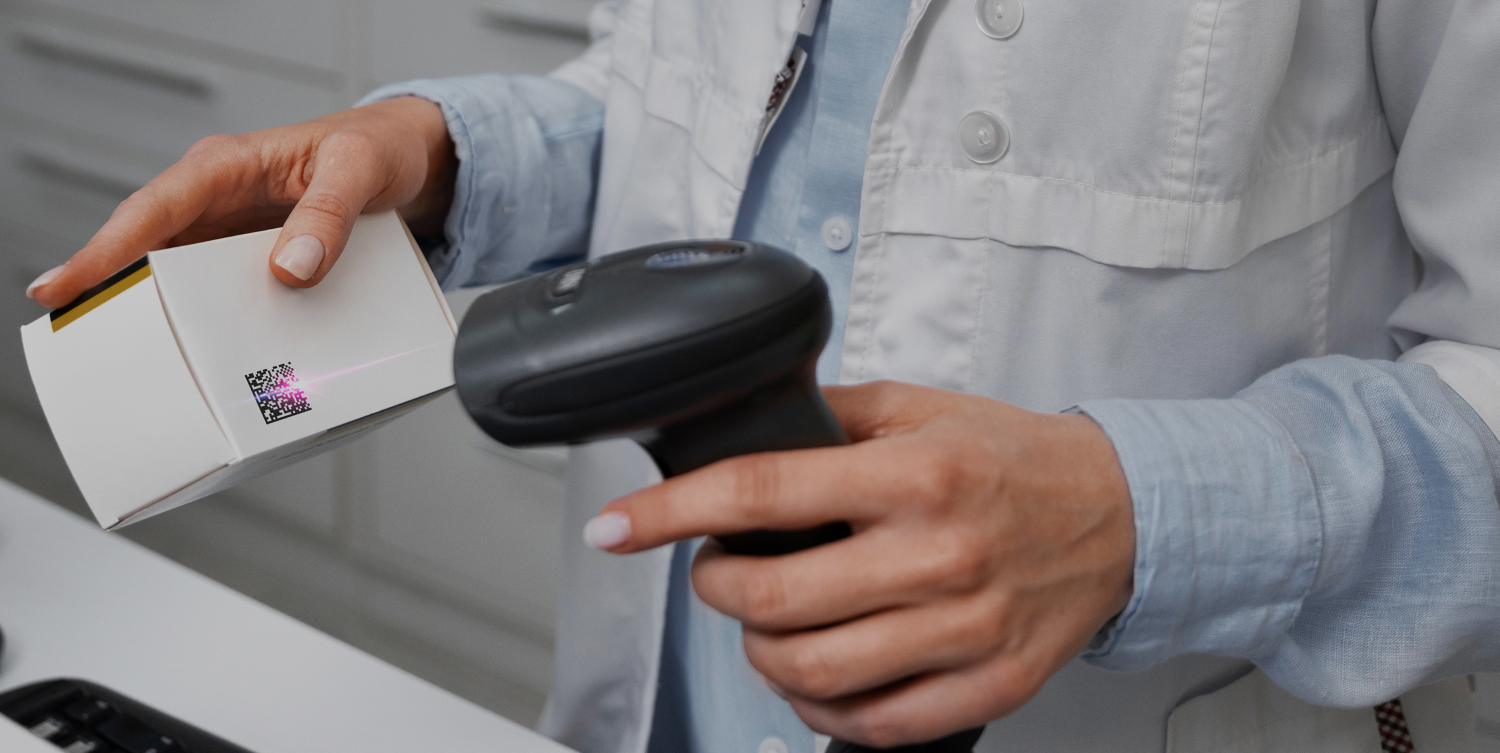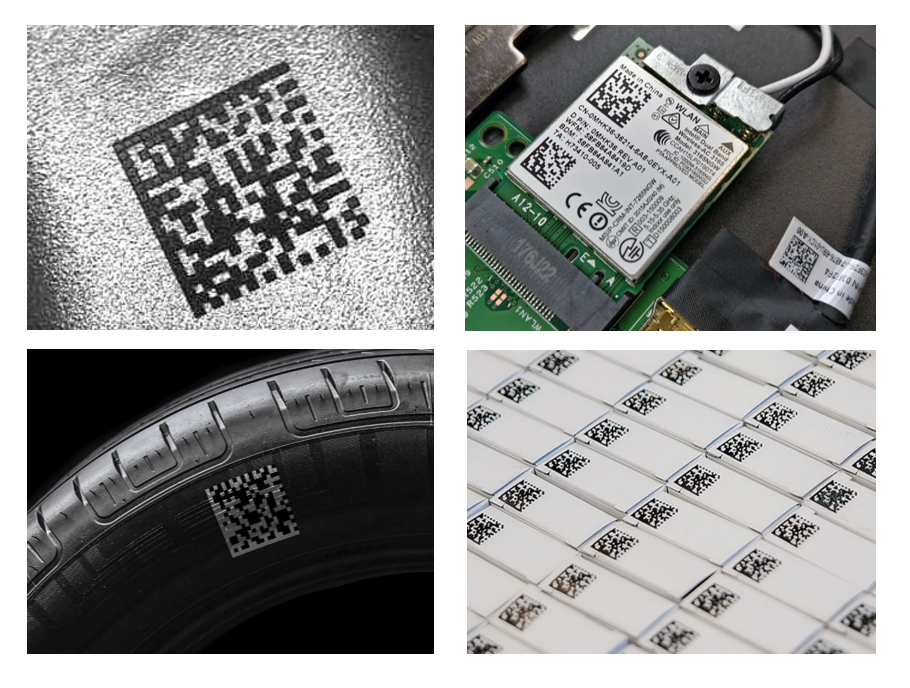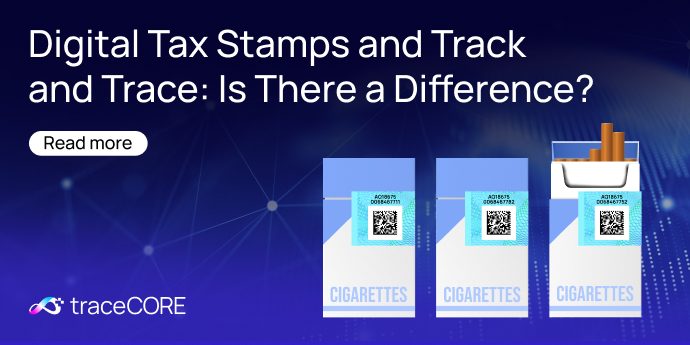Track and Trace for Governments
Track and Trace Markers and Their Life Cycle Stages

In today's globalized economy, ensuring the authenticity, safety, and compliance of products as they move through the supply chain is paramount.
Track and Trace markers — unique 2D DataMatrix codes — play a crucial role in this process, providing visibility and accountability at every stage.
In this post, we’ll take traceCORE Digital Track and Trace as a system example and delve into the lifecycle stages of those markers, from product registration to code withdrawal, and explore their significance in modern supply chains.
1. Product Registration
A manufacturer or importer registers on the National Traceability Platform and fills out information on the company, its warehouses, and production sites.
Each product type is registered in the National Product Catalog that is free to use for all participants of the turnover. A product card displays such details, as product manufacturer, ingredients, weight, shelf life, key properties, permits and certificates.
A unique identifier is assigned to each product card by the system. This identifier is incorporated into the DataMatrix code, providing detailed information about the product item.
Once the registration is complete, it’s time to order codes.
2. Ordering Codes
After product registration in the National Product Catalog, manufacturers or importers can request marking codes based on their production or import schedules.
The codes can be ordered through the manufacturer's or importer's personal account on the National Traceability Platform or via an ERP system integrated with the platform.

The generated marking codes are available for download in CSV or PDF formats and can be applied directly on production lines or used to print labels in a printing facility.
Code application is the next step, so let’s get into that.
3. Serialization
Applying marking codes to individual product units is known as serialization.
These codes, which are exclusively issued by the National Traceability Platform, are integral for tracking and authenticating products throughout their life cycle.
Once the codes are applied, a comprehensive application report detailing the serialization process is submitted to the National Traceability Platform, ensuring transparency and compliance.

The method of applying marking codes to products varies based on packaging type, manufacturing capabilities, and regulatory requirements.

There are different types of printers that can be used, such as:
-
Laser goods marking equipment, where a laser is used to apply marking codes directly on the product or packaging. Great for medium to large enterprises, as it’s the fastest and most precise option.
-
Thermal inkjet printer — a non-contact printing device that utilizes heat to propel ink droplets onto a surface, most suitable for small- and medium-sized companies.
-
DataMatrix sticker printer, which is the simplest and most accessible to participants option, making it an ideal choice for micro and small businesses.
Wondering how you can implement Digital Track and Trace in your country with minimal expenses and want to create an efficient strategy? Contact digital transformation experts at traceCORE today to learn more about your options.
4. Aggregation
The step after code application is aggregation. Aggregation refers to the process of assigning marking codes to product batches, enabling the traceability of grouped items.
Unlike product codes, which are unique to individual units, batch codes can be issued by any participant within the traceability system.
Once these codes are applied to product batches, an application report is generated and submitted to the National Traceability Platform, ensuring accurate and up-to-date records.
It's important to note that transferring non-aggregated products to other storage locations is prohibited, as it could compromise the integrity and traceability of the supply chain.

5. Product Commissioning
Once products are aggregated, they are ready for commissioning and shipment to the buyer. Before goods can be put into circulation within the National Traceability Platform, several procedures must be completed, varying depending on the product category:
.png)
Getting a Marking Code Application Document
This document confirms that marking codes have been correctly applied to the products, ensuring traceability and compliance.
.png)
Receiving the First Electronic Invoice
An electronic invoice is generated upon the transfer of goods, facilitating transparent and efficient financial transactions.
.png)
Providing Special Electronic Documents
Participants in the supply chain may need to submit specific electronic documents, such as those required for commission-based trading, to ensure proper documentation and compliance.

Export Documentation Integration
For goods intended for export, integration with customs information systems is essential. This process involves generating the necessary export documents, such as customs declarations, to facilitate smooth cross-border transactions.
These steps are crucial for maintaining the integrity and transparency of the supply chain, ensuring that all goods are properly documented and compliant with national and international regulations.
6. Goods Movement
When everything is set, goods are ready to go. The movement of goods is documented through the Electronic Documents Management (EDM) system, which is seamlessly integrated with the National Traceability Platform via electronic invoices.
This integration ensures that each transaction is recorded accurately and in real-time, providing a transparent and auditable trail of goods as they move through the supply chain.

As products move in the supply chain, the National Traceability Platform diligently records every change in ownership. This continuous tracking not only enhances transparency but also facilitates compliance with regulatory requirements, enabling participants to verify the legitimacy and provenance of products at any point in their journey.
But what happens next? Does a product code stay in the system forever?
No, it doesn’t, which is why there is a code withdrawal procedure that we are going to talk about next.
7. Code Withdrawal
Products may be removed from the National Traceability Platform for various legitimate reasons, each accompanied by specific documentation requirements:
Sale via Cash Register
When a product is sold through a cash register — be it a traditional point-of-sale system or an online cash register utilizing specialized software — the transaction is recorded, and the product is removed from the traceability platform. This process ensures that the product is accounted for in the sales system and that inventory records are updated accordingly.
Write-Off Due to Loss or Damage
If a product is lost or damaged beyond repair, it must be written off. Participants in the supply chain are required to provide confirming documents to the National Traceability Platform to validate the removal of such products. This documentation serves as evidence that the product is no longer in circulation and helps maintain accurate inventory and traceability records.
Exportation
When a product is exported out of the country, the transaction is recorded in the Customs Information System. This integration ensures that the movement of goods across borders is tracked and that the product is removed from the National Traceability System upon export. Such measures are crucial for maintaining the integrity of the traceability system and for complying with international trade regulations.
These procedures are essential for ensuring the accuracy and integrity of the National Traceability Platform, facilitating transparent and efficient supply chain management.
Why Governments Should Implement traceCORE Digital Track and Trace
While learning about Track and Trace markers and their life cycle stages, some benefits were already pretty clear.
However, traceCORE Digital Track and Trace solves problems on a big scale, offering governments across the world such benefits as:
-
Enhanced Tax Revenue: By monitoring product movements from manufacturing to point of sale, traceCORE Digital Track and Trace ensures accurate tax collection, reducing revenue losses from illicit trade.
-
Public Health Protection: The system helps identify and remove counterfeit or substandard products, safeguarding consumers from potential health risks.
-
Brand Protection: traceCORE Digital Track and Trace prevents counterfeiting, protecting legitimate businesses and fostering fair competition.
-
Operational Efficiency: The system integrates seamlessly with existing government and business systems, streamlining compliance and enforcement processes.
And much more! To learn about all capabilities of traceCORE Digital Track and Trace, visit this page or contact us directly.
Conclusion
Track and Trace markers are integral to modern supply chains, offering a transparent and efficient way to monitor products from creation to consumption.
By understanding their life cycle stages, businesses can better implement the technologies to enhance product integrity, ensure compliance, and build consumer confidence.
As technology evolves, the role of Track and Trace markers will undoubtedly expand, further solidifying their place in the future of supply chain management.
Related Posts
All postsDigital Tax Stamps and Track and Trace: Is There a Difference?
Digital Tax Stamps and Track and Trace systems are both used to fight illicit trade, but they work in fundamentally different ways. Only one provides real-time transparency and protection against counterfeiting. Read this post to learn more.

.webp)
.jpg)
